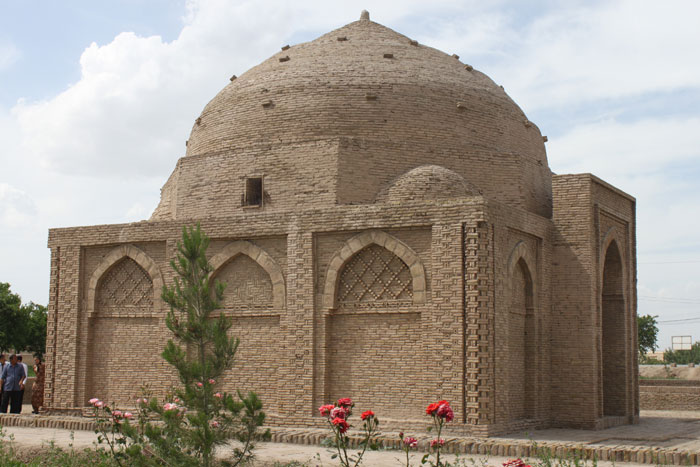The Mausoleum of Allamberdar is a part of the ancient city of Atamurat, in the south of the Lebap region, and the mausoleum building is the largest surviving early building of North Khorasan. This monumental building was erected in the XI century and belongs to the outstanding monuments of architecture.

Inside the mausoleum there is only one room with a false tomb-no archaeologists have found any burial under him, or around the monument. Perhaps the remains of what was once buried there, moved to another place. In the architecture of this structure, it is possible to note the rather specific features of the monumental architecture of Central Asia, the so-called “golden age”, the era of the Seljuk step.
The mausoleum is characterized by considerable dimensions and an unusual design of the facade. The facade of the mausoleum is abundantly decorated with decorative ornamental masonry, using carved figured bricks. The portal seems to protrude from the main volume of the building, and the pure brick texture of the entire interior gives the mausoleum a somewhat stern and solemn character.
